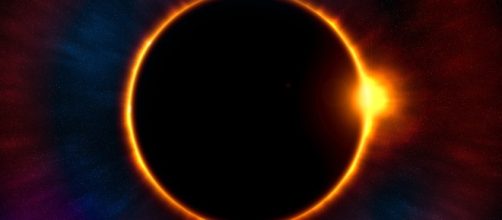There is an old theory resurfacing in the modern times. The ancient belief about the whole world being flat is getting a lot of followers and trolls. And with the latest space happening, the Solar Eclipse, taking the internet by storm, Flat Earthers also has something to say about the phenomenon that technically proves them wrong.
The important (troll) question
Katie Natopoulos from BuzzFeed was very curious about the Flat Earthers' say about the Solar Eclipse phenomenon. So she posted her question in a group of Flat Earthers. She was politely told to do her research, so she did.
Natopoulos scanned the threads from Flath Earth groups and also found some "useful" videos on YouTube. She finally found answers to her questions, and she shared it via BuzzFeed.
The Solar eclipse proves that the Earth is Flat
According to some theory on YouTube by user Celebrate Truth, the Earth is flat, and a Solar or a Lunar Eclipse is evidence that this theory is true. According to the theory, the world is living inside a big dome. Imagine a big bubble, and insert a coin in the middle. The coin is the Flat Earth while the bubble is the flat Earth's home.
The reason for the Solar and Lunar Eclipses is because the moon and the sun are traveling around the flat Earth on two separate tracks. Sometimes, they happen to be covering one another, causing a Solar or Lunar eclipse, depending on whose shadow is being cast.
Flaws of the Globe model
It is also emphasized that the shadow of the moon is too small when compared to a live experiment. Some Flat Earth believers simulated a Solar Eclipse by using a globe, a moon model, and different sources of lights such as an exposed bulb, a lampshade, and a flashlight. The shadow that the moon casts on all light sources is bigger than the simulated shadow from Globe theory model.
Attacking the theory by attacking the model is the motif of the experiment.
How the Globe believers respond
Bryan Gaensler, University of Toronto's director for Dunlap Institute of Astronomy and Astrophysics, however, states that the recreation of the eclipse in "your living room" makes it void. First, the lighting in the space works quite different in your living room.
The Sun is not a lamp or a flashlight that emits a focused beam of light in one direction. The Sun's light is spread evenly over a vast surface. It is making a difference on how a shadow acts.
And lastly, the distance of the moon to the Earth is way closer than the distance of the sun to the Earth. Since the distance from the Sun to the Earth is 400x the distance of the moon to the Earth, you can't simulate similar results in a cramped up living room.


